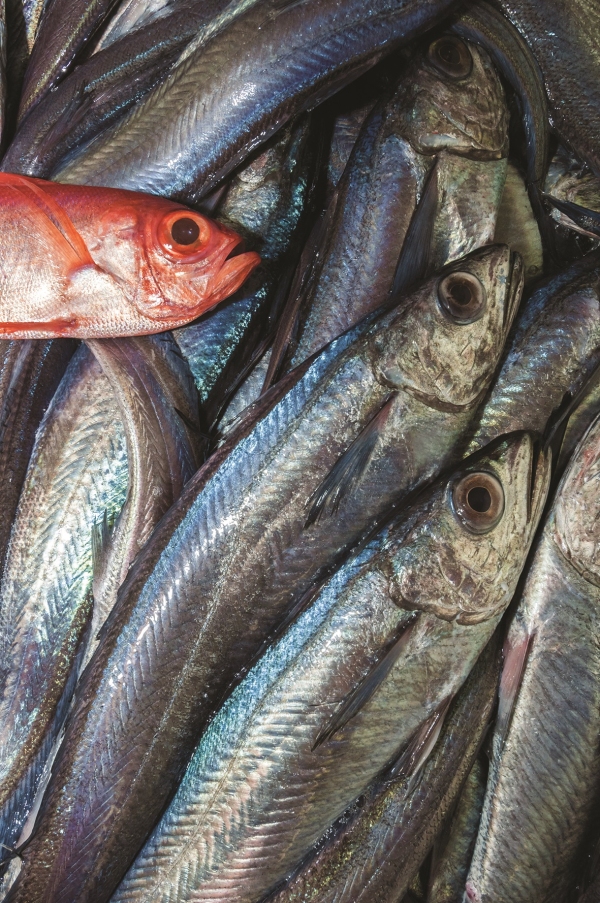A NIWA-developed advanced software package is becoming the international standard in the assessment and management of fish stocks, including some of the world’s most prized species.
CASAL (C++ Algorithmic Stock Assessment Laboratory) is an advanced software package developed by NIWA to provide quantitative assessments of the status of most of New Zealand’s fish stocks and shellfish fisheries for the Ministry for Primary Industries (MPI).
CASAL is also proving a major catch internationally, with overseas agencies adopting the package to assess Patagonian and Antarctic toothfish and broadbill swordfish fisheries.
NIWA Principal Scientist and CASAL Development Team leader Dr Alistair Dunn says CASAL is being used by the Commission for the Conservation of Antarctic Marine Living Resources (CCAMLR), an agency established in 1982 with the objective of conserving Antarctic marine life.
CCAMLR uses CASAL to assess stocks of Antarctic (Dissostichus mawsoni) and Patagonian (Dissostichus eleginoides) toothfish, with Japan, Australia, the United Kingdom and France also adopting the package to monitor numbers and the management of the valuable fishery.
“We developed the methodology using the types of data for CCAMLR, and everyone else adopted it because it was a really easy way for them to get up to the same space in an integrated way and to report the results using our package,” says Dunn.
“The inputs and the outputs are all standard, so we can all read them. There are lots of language barriers in international communities, so this gives us a standard language to use on the topic.”
The CASAL software implements a generalised age- or length-structured fish stock assessment model that allows a great deal of choice in specifying population dynamics, parameter estimation and model outputs.
CASAL is designed for flexibility
Designed for flexibility, CASAL also optionally structures population by sex, maturity and/or growth path. It can be used for a single stock for a single fishery or for multiple stocks, areas and/or fishing methods.
The data used can be from many sources; for example, catch-at-age and catch-at-size data from commercial fishing, survey and other biomass indices, survey catch-at-age and catch-at-size data, and tag-release and tag-recapture data.
“It allows us to undertake assessments of marine species such as fish using best-practice methods in a relatively straightforward and standard way,” says Dunn.
“It’s a generalised piece of software that allows us to try out different approaches and assumptions quickly and easily and assess which assumptions are likely to be true and which aren’t.”
CASAL was developed as a direct response to other, more limited, assessment tools.
“Until now, people writing assessment packages have solved the specific problems in front of them, and they’ve written specific pieces of code for those problems.
“What we set out to do with CASAL was to write something that applied to any type of problem, using switches or commands to replicate any structure that might be chosen, be it species, age structure or length-base models – we can include a wide variety of life history characteristics across different time periods using different observations.
“CASAL means any structure can be replicated and modelled.”
CASAL helps sustainable and efficient fisheries management
Ultimately, CASAL is helping more efficient and sustainable management of fisheries, says Dunn.
In New Zealand, fisheries often safely operate in a target biomass (a total mass of breeding fish compared with the population estimate before fishing began) range of about 40 per cent, depending on species and stock. A biomass level of about 20 per cent represents an overfished stock and one below 10 per cent represents a stock that has collapsed and is at risk of not recovering.
“CASAL can constantly readjust and manage inputs around a target quickly, so we can see how to maximise a catch without damaging the stock population.
“For example, in the past 10 years we’ve moved from a situation with our middle-depth (hoki) and deepwater (orange roughy) stocks where there was some pressure coming on and stocks were starting to decline. CASAL can model outcomes for a wide range of stocks. It has been able to help fisheries’ managers make changes in total allowable catch, so some stocks are now looking quite healthy.”
CASAL v2.0 will have a modular approach and even more flexibility
While CASAL has been a huge success it has become apparent that, despite occasional bug fixes and updates, it is getting a little long in the tooth. To bring it up to speed, Dunn and his team – in conjunction with MPI – have been working on CASAL II.
“We’re planning to go live with CASAL II in about six months,” Dunn says. “CASAL was a great piece of code for its time, but we’ve gone back to the drawing board and taken all the learnings to build a unique, open-source product.”
CASAL II will comprise a modular approach, with standard interfaces that can be clipped together like Lego blocks to “do all the things CASAL can do now and things we haven’t even thought of yet”.
It is a tool that co-funder MPI is looking forward to using.
“The original CASAL was state of the art. It was up there with the best in the world,” says MPI Chief Scientist Pamela Mace.
“But there are some things CASAL can’t do, or can’t do very easily, so we’ve asked for more flexibility and a more modular approach. We’re looking forward to seeing CASAL II, and progress reports to date sound very good.”

